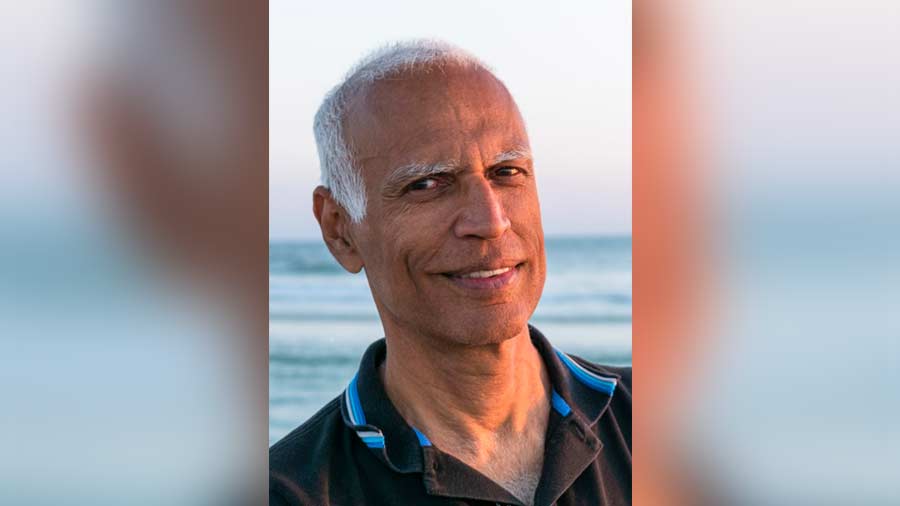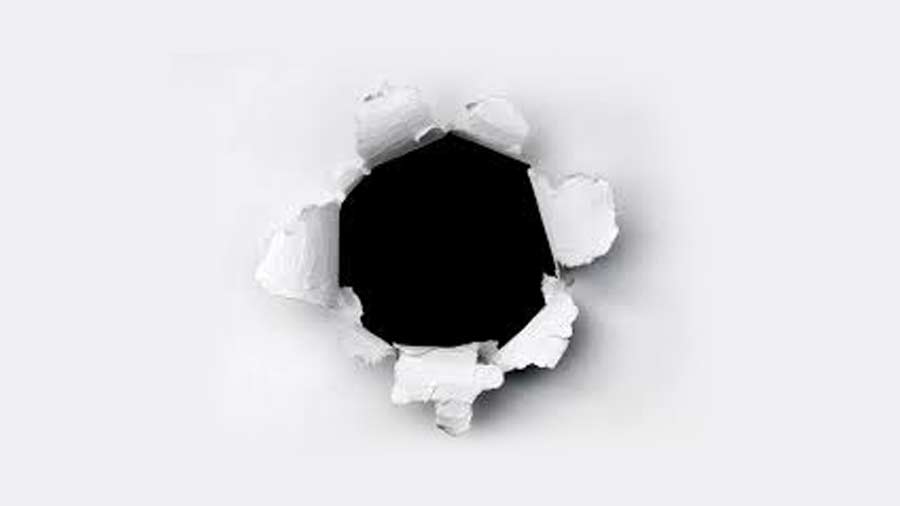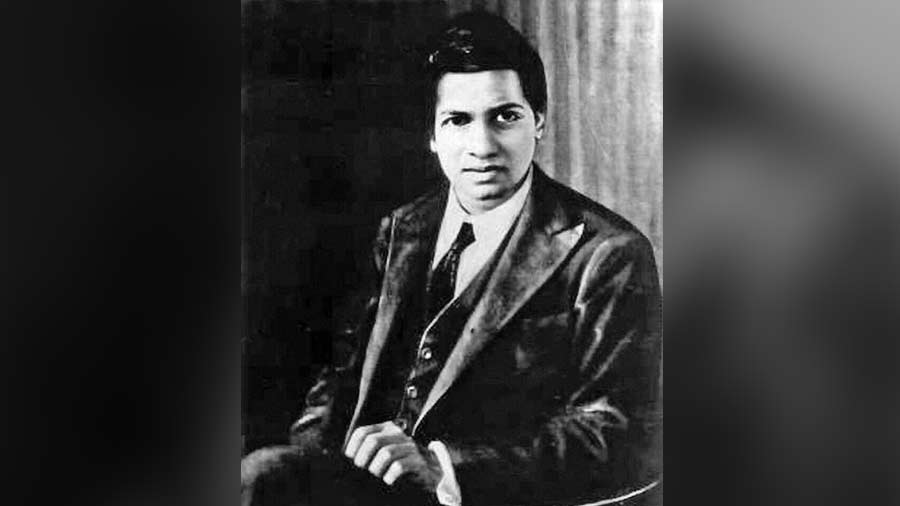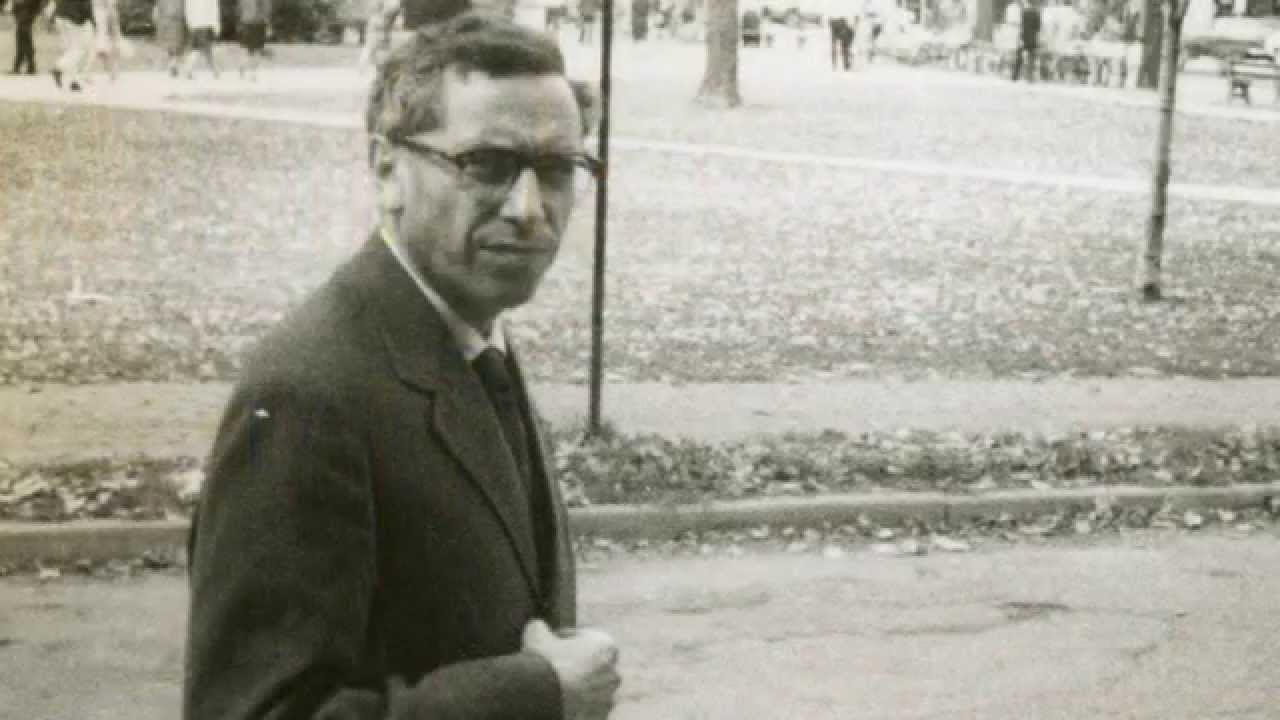Maths professor and novelist on his new book on maths and what makes the subject fascinating yet misunderstood

How would you define mathematics? As a system of numbers, formulas and structures that is universally applied yet frequently dreaded? As a discipline that involves the use of pure reason? As a way of thinking, a way of life?
For Manil Suri, author of multiple literary novels and professor of mathematics at the University of Maryland, Baltimore County, “maths is essentially about ideas”. In his new book, The Big Bang of Numbers (published by Bloomsbury), Suri explains the role and relevance of maths by creating a universe entirely out of numbers. With some assistance from literary devices, plenty of relatable humour and a memorable cameo from the Pope (though he may not be aware of it!), Suri’s book is designed to make people fall in love with maths.
My Kolkata caught up with Suri to understand more about his book, compare the teaching of maths in India and the US, unpack maths through beauty, discovery and more. Edited excerpts from a Zoom session connecting a sunny morning in Silver Spring, Maryland with a drizzly evening in Kolkata follow.
My Kolkata: Tell us about your memories of growing up in Mumbai and what led you to switch from physics to maths in university.
Manil Suri: I grew up in Mumbai in the 1960s and ’70s, as the only child in a middle-class family, living in a single room of an apartment and getting on easily with our neighbours even though we were from different backgrounds and communities. My parents put me in a very good school called Campion, after which I went to Jai Hind College to major in physics. My switch to maths came in 1977 when I was at the Indian Institute of Science. I had a very colourful professor there, Dr Huzurbazar, who’d keep telling me that I should switch to maths. His classes were amazing and that’s what finally convinced me. Dr. Huzurbazar was also the one who encouraged me later to go to the US (and study at Carnegie Mellon University).
I was amazed to see the second-hand books in Kolkata

Have you had a chance to spend any time in Kolkata? If yes, what appealed to you most about the city?
I have. My aunt used to live there and I’ve been to Kolkata twice. On my first visit in the ’80s, I found Kolkata to be a really bustling city, even more so than Mumbai at the time. After that, I returned to Kolkata about a decade ago for a book festival and was amazed to see the second-hand books on offer. That, for me, was a sign of the intellectual life of the city.
The Indian system of teaching maths has more recall value than the one in the US
Since you have seen both education systems closely, what would you say are the biggest differences in how maths is taught in India and the US, especially in schools?
My experience in India was from very long ago, so I suspect things have changed a lot since. But what surprised me the most once I went to the US was how you were expected to ask questions in class. In India, you mostly listened in silence to the teacher and took notes assiduously, unless you were specifically asked to speak in class. There was a lot of emphasis on focusing on certain problems and then preparing on exams. On the other hand, homework and regular grades mattered a lot in the US. Both approaches have their pros and cons. I feel the one in the US allows you to get your hands dirty, to discover more by yourself. But when it comes to recall value, I feel the Indian system, with its constant drills, does a better job.

Suri feels that people are becoming more acceptable to seeing the common ground between literature and mathsImage courtesy Larry Cole
As someone who has written literary novels but is a professor of mathematics in his day job, would you say there are similar characteristics that govern literature and maths? Or are they, as the stereotype goes, poles apart?
At a basic level, they’re very different, for the mental muscles involved are very different, more so when you’re doing maths, as opposed to writing about it. The challenge is to bring these two together, which is what I’ve been trying to do for the past 15 years or so. I take classes where I teach mathematicians how to write essays, while also shedding light on the usefulness of maths for non-mathematicians. It’s a constant struggle to reconcile the two cultures, but I’m optimistic that in spite of being conditioned to stay in different and seemingly mutually exclusive fields for decades, people’s attitudes are slowly changing.
The majority of people found it interesting and said that it opened their eyes
Your op-ed in The New York Times, “How to Fall in Love with Maths” (published in 2013), is the inspiration as well as the fountainhead for your book The Big Bang of Numbers. What sort of a dialogue were you trying to create with your op-ed and what sort of feedback did you receive?
Engaging with artists and writers made me realise that people were interested in listening to me talk about maths. I developed a talk on infinity, which a lot of non-mathematicians found very interesting. All your life, you keep hearing that maths is all about calculations, while in essence, maths is all about ideas. That was the main motivation behind writing the op-ed. The reaction was more than I could’ve imagined. Some of the responses weren’t amazing. People were like: “This guy likes maths, good for him, please don’t bother us.” But the majority of the people found it interesting and said that it opened their eyes.
I went back to the drawing board for the third time

Suri first thought of a book on maths in 2008Image courtesy Larry Cole
After the success of your op-ed, what took you so long to write a book about maths?
I first started thinking about writing a book on maths for the general public in 2008. I was going to call it The M Word. I wrote about 200 pages, only for my editor to call it ‘charming’, which meant that she wasn’t going to publish it. When my op-ed came out in 2013, I decided to go back to that book. But I had also published a novel in 2013 (The City of Devi), which took up a lot of my time. Then, I wanted to write a novel on maths, called The Godfather of Numbers. Characters were supposed to be numbers and maths was to be presented in a very different way in it. But once again, my editor told me that this would be tough to sell, so it didn’t get published. The Big Bang of Numbers happened when I went back to the drawing board for the third time. Even though it’s non-fiction and it’s easier for me to explain ideas without being illusive, it retains certain elements of fiction, such as a story about infinity and numbers being imagined as characters.
You write in the introduction of your book that maths is essentially about ideas. Can you pin down a couple of these ideas?
Sure. The first idea is about numbers. When you look at them carefully, numbers are just abstractions. They are tools, a kind of an invention, which enable you to talk about quantity. Numbers themselves are mathematical entities, they’re not just for counting. The next idea will take us all the way to calculus. A long time ago, Archimedes was the first one to calculate the volume of a sphere. He conceived of the sphere as infinite thin slices stacked on top of each other. By using this idea, he was able to calculate the volume of the sphere. This idea forms one of the basic ideas of calculus, where you split something into several parts and calculate its volume, apart from other sorts of calculations, too. Even though calculus students may learn a lot of formulas, it’s the ideas that are more important.
Seven different types of nothingness

Suri distinguishes between nothingness and emptiness in maths
One of the fascinating observations you make early on in your book is the distinction between nothingness and emptiness and how that applies to maths. Could you explain that briefly?
In the book, I talk about creation ex nihilo, meaning “creation out of nothing”. In maths, you can create numbers almost through nothing. Nothing is called an empty set and from there you can create zero and its successors. When people usually think of nothing, they think of an empty space. Like an empty box. But even an empty box occupies space, so it’s not exactly nothing. So, nothing isn’t the same as emptiness. There’s a mathematician called Richard Kuhn who has a paper where he shows the seven different types of nothingness. In maths, we’re essentially using one of the different kinds of nothings and proceeding from there.
I find symmetry more attractive; the golden ratio remains hazy for me

Leonardo da Vinci’s Mona Lisa is often regarded to be a great example of the golden ratio in artTT Archives
How does maths relate to beauty? And if we are talking about mathematical beauty, which of the two is more important: symmetry or the golden ratio (in mathematics, two quantities are in the golden ratio if their ratio is the same as the ratio of their sum to the larger of the two quantities; the value of the golden ratio is approximately 1.618)?
The golden ratio was popularised by Luca Pacioli, an Italian mathematician and friend of Leonardo da Vinci, who himself was interested in the golden ratio and drew 60 diagrams for Pacioli’s book on the subject. Through the ages, people have felt that the golden ratio is very pleasing to look at, as in the case of the Mona Lisa, which is believed to adhere to it. There has been extensive research on whether we inherently find the golden ratio attractive as part of facial features, but so far the research is inconclusive. Alternatively, at the most basic level, humans and mostly all animals like bilateral symmetry, probably because it’s an evolutionary indication of good health and well-being. There are other kinds of symmetries too, such as squares being folded many times over. George David Birkhoff, an American mathematician, has shown that the more the symmetry of an object, the more its beauty. Personally, I find symmetry more attractive; the golden ratio remains hazy for me.
You use a number of compelling metaphors in your book to better explain the role of maths. My favourite was about crocheting and parabolic space. What was the one you enjoyed writing about the most?
For me, it’s the crocheting one, too. I had contacted someone in Australia with a website called Spin Cushions (now Shelley Husband Crochet), where she teaches people how to crochet a perfect, flat circle, to help me with some images of crocheting. She obliged and the pictures feature in the book. In the process, she was fascinated to see the connection with maths. It was great for me to be able to talk about different types of geometry using these metaphors, and also to talk about three-dimensions and how 3-D space can be curved, through the ruffling and cupping involved with crocheting.
For ordinary people, geometry is more relevant than algebra

Geometry and algebra have very different practical applications, explains SuriTT Archives
A question that most kids in middle school have pondered: which of algebra and geometry matters more in life and to the universe at large?
Geometry is essential in that we’re always looking at objects. It plays a big part in our intuitive interaction with the universe. But I’m not sure how much of a cognitive connection there is between intuitive geometry and the kind we learn in middle school. In some sense, there’s a connection, as in congruence. Algebra, however, is more about language and expressing ideas in terms of variables and formulas. For an ordinary person, algebra wouldn’t come up as much. You can probably go through your entire life without having to solve a single quadratic equation. But you can’t really go through life without knowing what a circle or triangle is.
If you lose humans, there’s no perfect triangle or perfect circle or perfect sphere in the universe

Srinivasa Ramanujan believed that mathematical formulas were a divine revelationTT Archives
Do you believe that maths is something we create or is it something we discover? And how does this tie in with the conception of maths as its own religion, as something trying to explain existence?
Maths as a discipline is often connected to religion. Leopold Kronecker, a German mathematician, said: “God gave us the whole numbers, everything else is the work of man.” Dr Huzurbazar, whom I spoke of earlier, went a step further: “I don’t need God, I can create the integers and whole numbers myself!” But then you take someone like Srinivasa Ramanujan, who used to believe that there was a goddess who brought all his mathematical insights to him. He saw formulas as an expression of divinity. Even Plato used to think that every mathematical truth is in some different realm, completely different to ours. Occasionally, the clouds part, you get a glimpse of something and that’s how you make mathematical discoveries. This is why, for many people, maths is a religion. Other people feel we create maths as a way to solve problems. They say that if you lose humans, there’s no such thing as a perfect triangle or a perfect circle or a perfect sphere in the universe. It’s all a product of the human mind. For me, this question can’t be answered, because it’s in the nature of maths to have both qualities, of creation and discovery. In this way, maths parallels life. Maths is a great metaphor for our own existence. Do we exist for a purpose, has someone created us? Or is it by chance? If we can’t decide about ourselves, we can’t decide about maths either.
Now that you have written your first book on maths, can we expect more on the subject? Or will it be back to the literary novels for the time being?
Actually, it’s neither, since my next book is going to be a memoir. When I came to the US, I started writing to my parents regularly, about three times a week. Over the years, I wrote some two to three thousand letters, all of which have been diligently collected by my mother. I feel I don’t want to let such a great resource go to waste, so I want to write a memoir based on these letters.
Lastly, what are your other hobbies and interests apart from maths and literature? How do you zone out?
I love movies and food. My father (R.L. Suri) was a music director in Bollywood, so I’ve been exposed to films all my life. I recently watched Tar, which I found interesting, but the movie that I’ve liked best in the last few months has been Gehraiyaan. As for food, I had catered for a year sometime ago and I still love to combine Indian food with other cuisines and experiment whenever I get the chance.
2nd Edition of International Research Awards on Mathematics and Optimization Methods
Website Link:https://maths-conferences.sciencefather.com/
Award Nomination: https://x-i.me/XU6E
Instagram: https://www.instagram.com/maths98574/
Website Link:https://maths-conferences.sciencefather.com/
Award Nomination: https://x-i.me/XU6E
Instagram: https://www.instagram.com/maths98574/
Tumblr: https://www.tumblr.com/maths2588
Twitter: https://twitter.com/AnisaAn63544725
Pinterest: https://in.pinterest.com/maxconference20022/
#maths #numericals #algebra #analysis #analysis #mathmatics #numericals #number #complex #graphics #graphs









 Li-Mei Lim, a research professor of mathematics and statistics at CAS, explains the “Zeno’s Paradox” section of Mathemalchemy to visitors at the installation’s opening reception on January 20.
Li-Mei Lim, a research professor of mathematics and statistics at CAS, explains the “Zeno’s Paradox” section of Mathemalchemy to visitors at the installation’s opening reception on January 20. Lim credits Dominique Ehrmann, a fiber artist and a founding Mathemalchemist, with teaching her the fundamentals of quilting. The two collaborated with Mary Williams, a mathematician and fellow fiber artist, to create a “Cryptography Quilt” for the show.
Lim credits Dominique Ehrmann, a fiber artist and a founding Mathemalchemist, with teaching her the fundamentals of quilting. The two collaborated with Mary Williams, a mathematician and fellow fiber artist, to create a “Cryptography Quilt” for the show. The two dozen collaborators split into teams to design and fabricate Mathemalchemy’s different sections. They presented their progress to the whole group over weekly Zoom sessions.
The two dozen collaborators split into teams to design and fabricate Mathemalchemy’s different sections. They presented their progress to the whole group over weekly Zoom sessions. While Fibonacci Spirals and fractals can be found throughout Mathemalchemy, its creators were determined to represent the intersection of math and art in ways that had never before been explored.
While Fibonacci Spirals and fractals can be found throughout Mathemalchemy, its creators were determined to represent the intersection of math and art in ways that had never before been explored.


 ,
, 